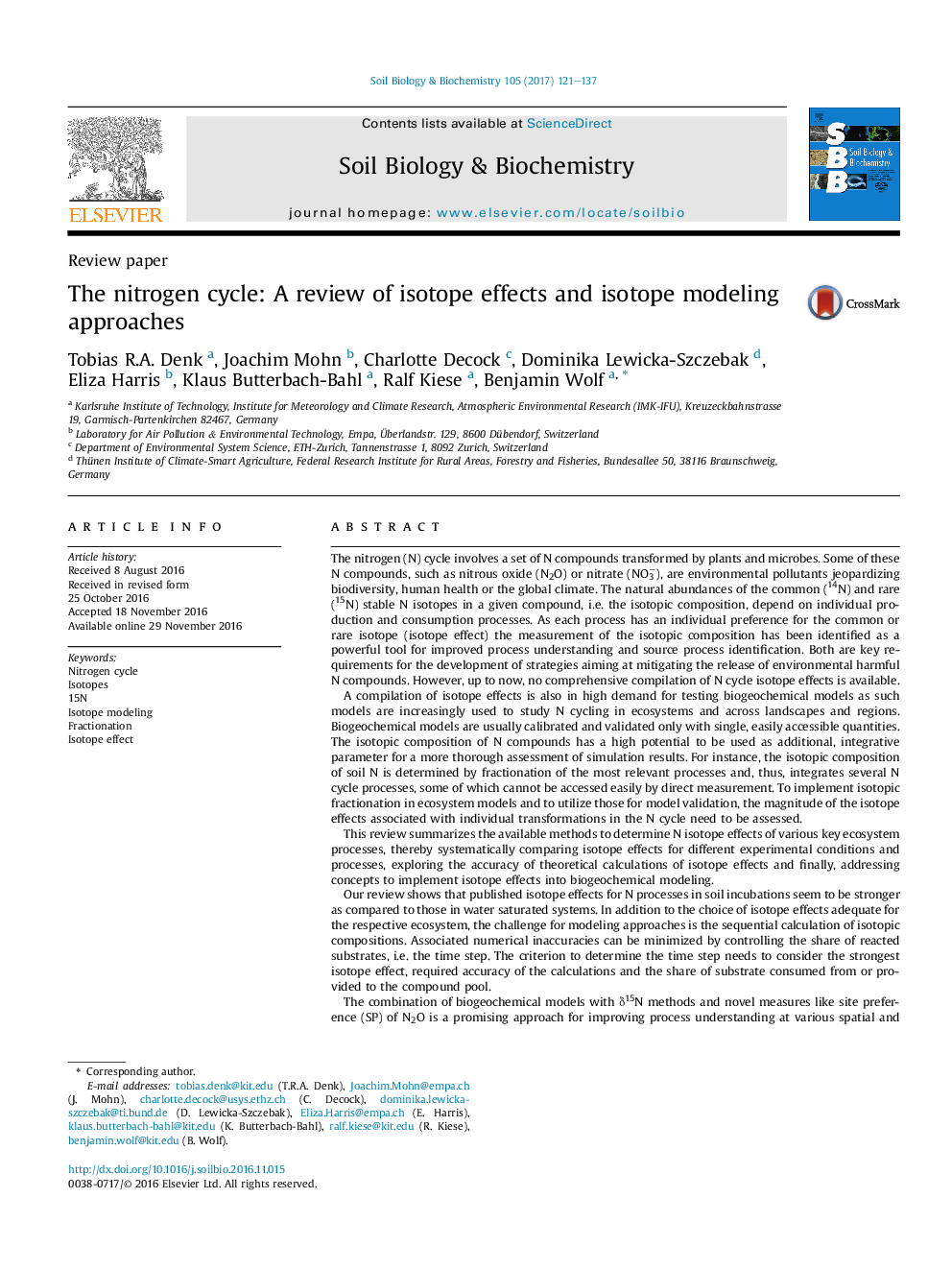| Article ID | Journal | Published Year | Pages | File Type |
|---|---|---|---|---|
| 5516510 | Soil Biology and Biochemistry | 2017 | 17 Pages |
•Comprehensive compilation and discussion of N isotope effects for terrestrial environments.•Systematic comparison of different methods for determination of N isotope effects.•Summary of existing modeling approaches.•Recommendation of a set of N isotope effects including uncertainty for the terrestrial N cycle.
The nitrogen (N) cycle involves a set of N compounds transformed by plants and microbes. Some of these N compounds, such as nitrous oxide (N2O) or nitrate (NO3−), are environmental pollutants jeopardizing biodiversity, human health or the global climate. The natural abundances of the common (14N) and rare (15N) stable N isotopes in a given compound, i.e. the isotopic composition, depend on individual production and consumption processes. As each process has an individual preference for the common or rare isotope (isotope effect) the measurement of the isotopic composition has been identified as a powerful tool for improved process understanding and source process identification. Both are key requirements for the development of strategies aiming at mitigating the release of environmental harmful N compounds. However, up to now, no comprehensive compilation of N cycle isotope effects is available.A compilation of isotope effects is also in high demand for testing biogeochemical models as such models are increasingly used to study N cycling in ecosystems and across landscapes and regions. Biogeochemical models are usually calibrated and validated only with single, easily accessible quantities. The isotopic composition of N compounds has a high potential to be used as additional, integrative parameter for a more thorough assessment of simulation results. For instance, the isotopic composition of soil N is determined by fractionation of the most relevant processes and, thus, integrates several N cycle processes, some of which cannot be accessed easily by direct measurement. To implement isotopic fractionation in ecosystem models and to utilize those for model validation, the magnitude of the isotope effects associated with individual transformations in the N cycle need to be assessed.This review summarizes the available methods to determine N isotope effects of various key ecosystem processes, thereby systematically comparing isotope effects for different experimental conditions and processes, exploring the accuracy of theoretical calculations of isotope effects and finally, addressing concepts to implement isotope effects into biogeochemical modeling.Our review shows that published isotope effects for N processes in soil incubations seem to be stronger as compared to those in water saturated systems. In addition to the choice of isotope effects adequate for the respective ecosystem, the challenge for modeling approaches is the sequential calculation of isotopic compositions. Associated numerical inaccuracies can be minimized by controlling the share of reacted substrates, i.e. the time step. The criterion to determine the time step needs to consider the strongest isotope effect, required accuracy of the calculations and the share of substrate consumed from or provided to the compound pool.The combination of biogeochemical models with δ15N methods and novel measures like site preference (SP) of N2O is a promising approach for improving process understanding at various spatial and temporal scales. Nevertheless, the compilation of isotope effects in this review may not only be of benefit for modelers, but also for experimentalists, as measurement and modeling of isotope effects may eventually help to test and validate our current process understanding of the N cycle.
